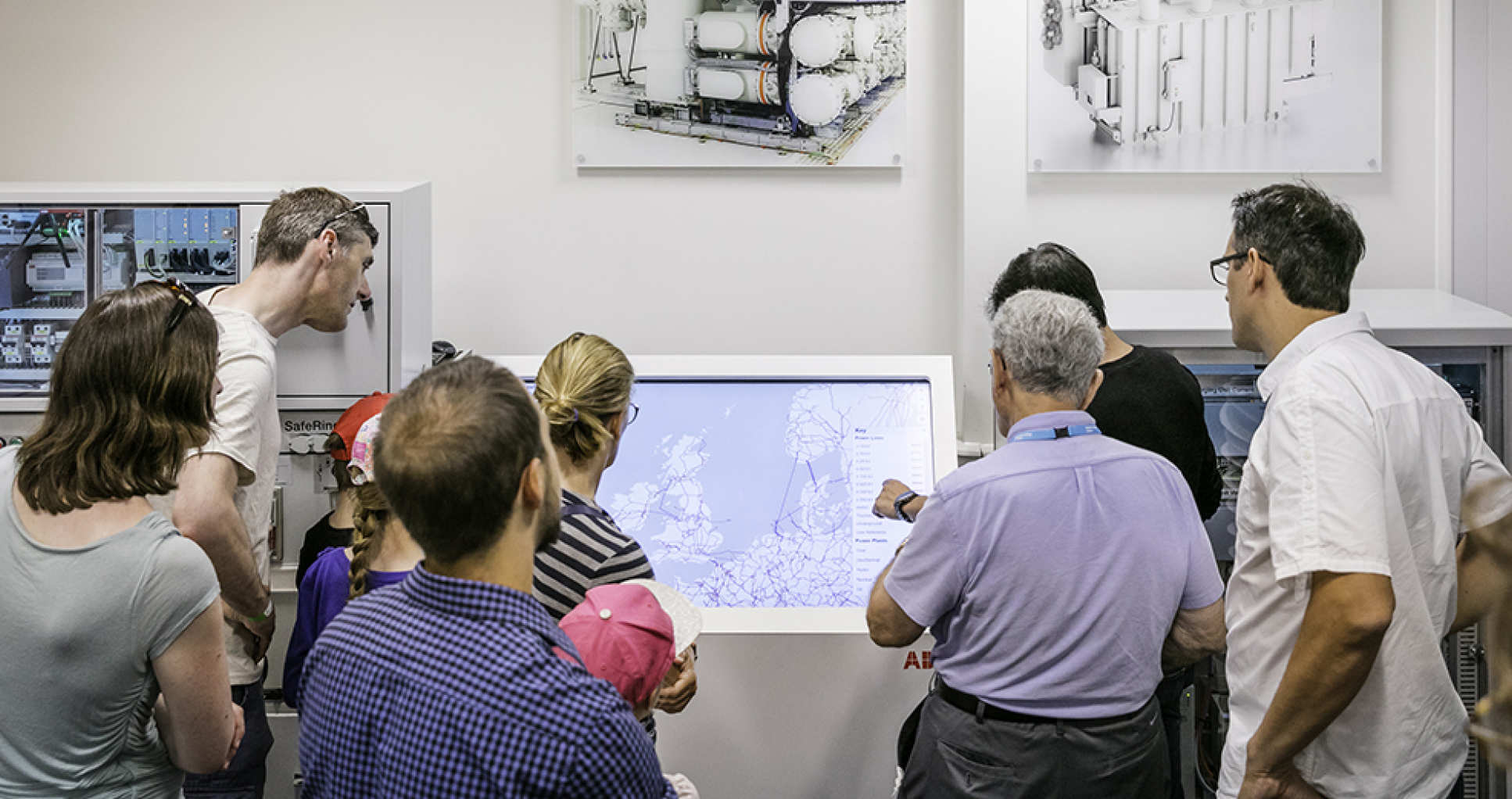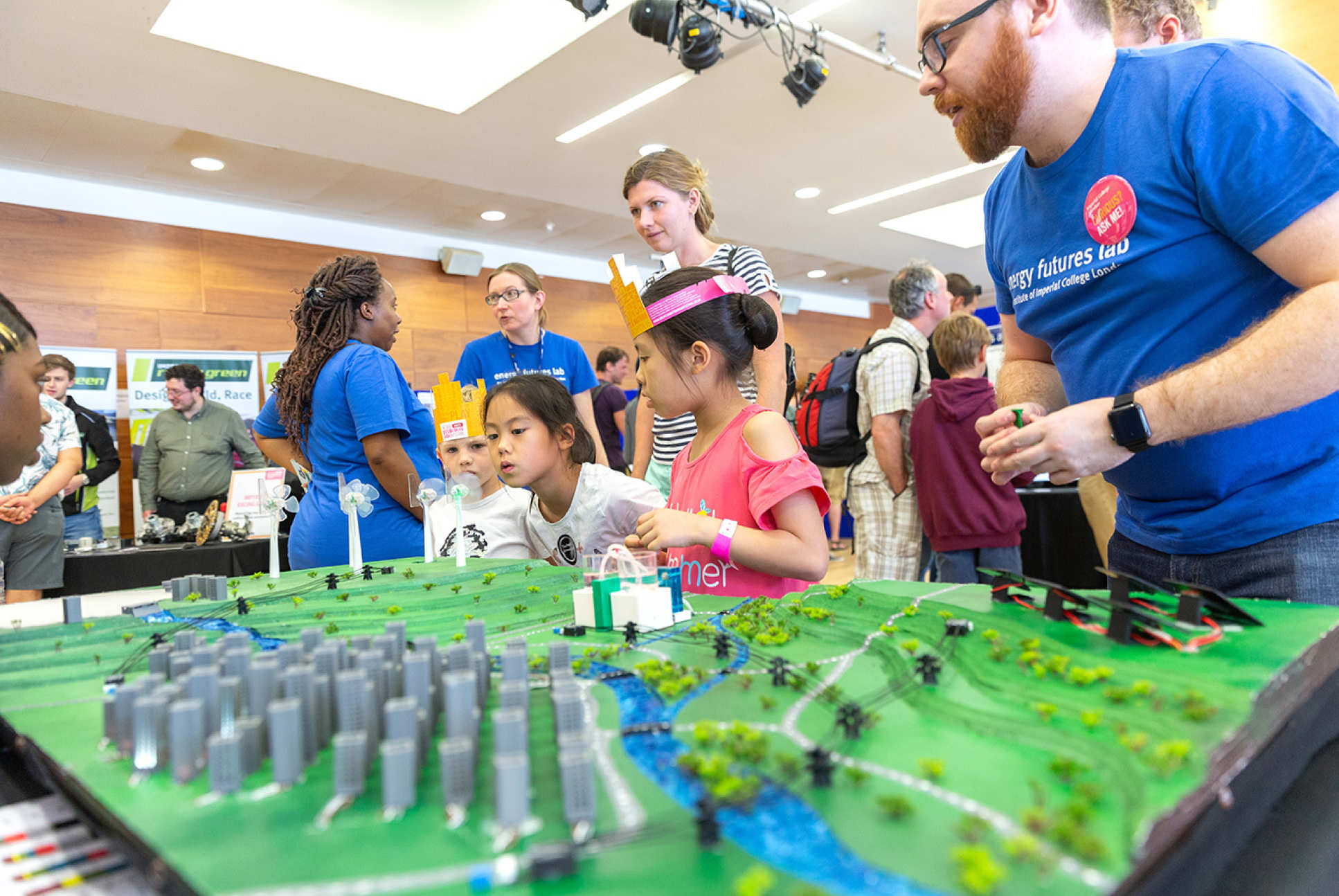Energy Futures Lab joins in the fun at the Great Exhibition Road Festival

Recently Energy Futures Lab and the IDLES team participated in the inaugural Great Exhibition Road Festival.
Held over the weekend of the 29th and 30th June, the Great Exhibition Road Festival saw thousands of visitors descend on South Kensington, undeterred by the soaring temperatures. The Festival brought together local institutions, including Imperial College London, the Science Museum, the V&A and the Natural History Museum, for the first time in an exciting programme of creative workshops, talks, exhibitions and performances.
“The event was a huge a success and it was great to have so many researchers from around campus volunteering and talking about their work with visitors.” said Dr Kathryn Wills, Project Manager for IDLES, who helped pull together the Energy Futures Lab activities, “We had a few approaches from visitors who were keen to follow up with colleagues, either to collaborate or to participate in other outreach events. We are definitely looking forward to the 2020 event.”
Energy Futures Lab held 10 tours of its newly commissioned ABB-Imperial Digital Energy Demonstrator, where visitors were able to hear about ways that the electricity grid can be controlled and managed in the near future, as the UK energy system moves towards a more integrated and decarbonised future. The facility is a state-of-the-art research and teaching tool which forms a vital part of the IDLES research programme, as we improve understanding of how the energy sector’s different components (such as electricity, gas, heat and transportation) can best interact and integrate with each other.

Over in the Greener Futures Zone, Energy Futures Lab brought together Imperial researchers and students with a passion for energy to highlight several projects. The “wow-factor” was provided by Wattown, an interactive model of a town of the near-future which shows how renewable energy sources can be integrated with energy storage options to power a town. Visitors could see how their actions of blowing wind turbines or illuminating solar panels could power the town, which changed colour via lights embedded in the city buildings. It was great fun for the kids and enabled volunteers to open up conversations with visitors around renewable energy. The Imperial College Energy Society also exhibited three projects; a 1.5m high wind turbine; a solar panel demonstration and components from a nuclear fusion project.

Colleagues from the Sustainable Gas Institute ran a competition ‘Shrink your Carbon Footprint’, using ping pong balls to represent quantities of CO2 saved, where visitors aimed to reduce their annual carbon footprint via making certain lifestyle changes such as using tap water vs bottled water and giving up meat. “It was a great interactive activity for encouraging people to think about their own carbon footprint and to question their assumptions around it.”
Visitors were also able to join IDLES researcher Dr Iain Staffell at a touch-screen version of Renewables Ninja, a website created by Iain and Dr Stefan Pfenninger (of ETH Zurich). Renewables Ninja lets you find out how much energy wind and solar farms can produce anywhere in the world, using global weather data from NASA, such as wind speeds, incoming solar radiation, cloud cover and temperature. The website is freely available and used by 3000 academics, companies and government employees.
Article text (excluding photos or graphics) © Imperial College London.
Photos and graphics subject to third party copyright used with permission or © Imperial College London.